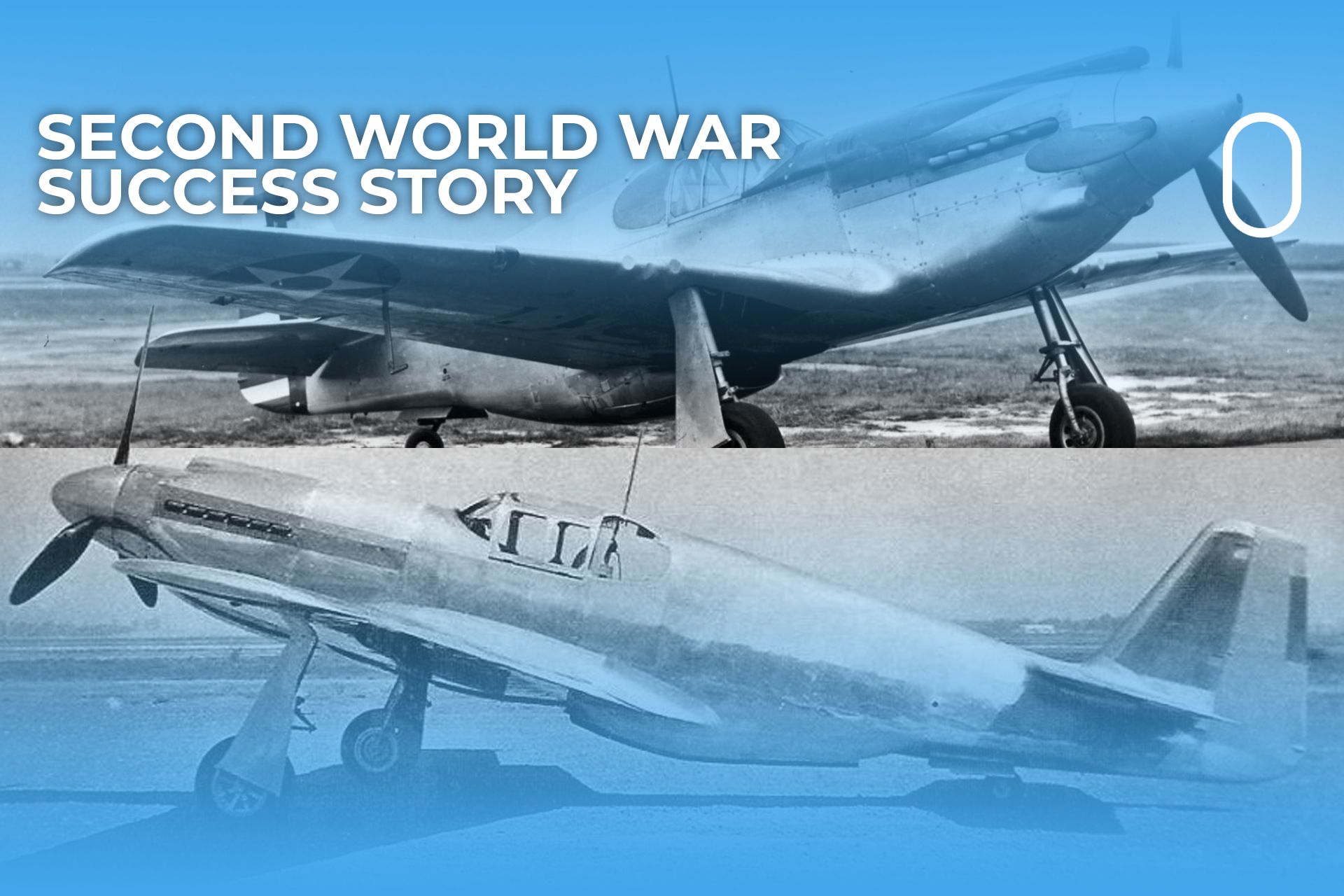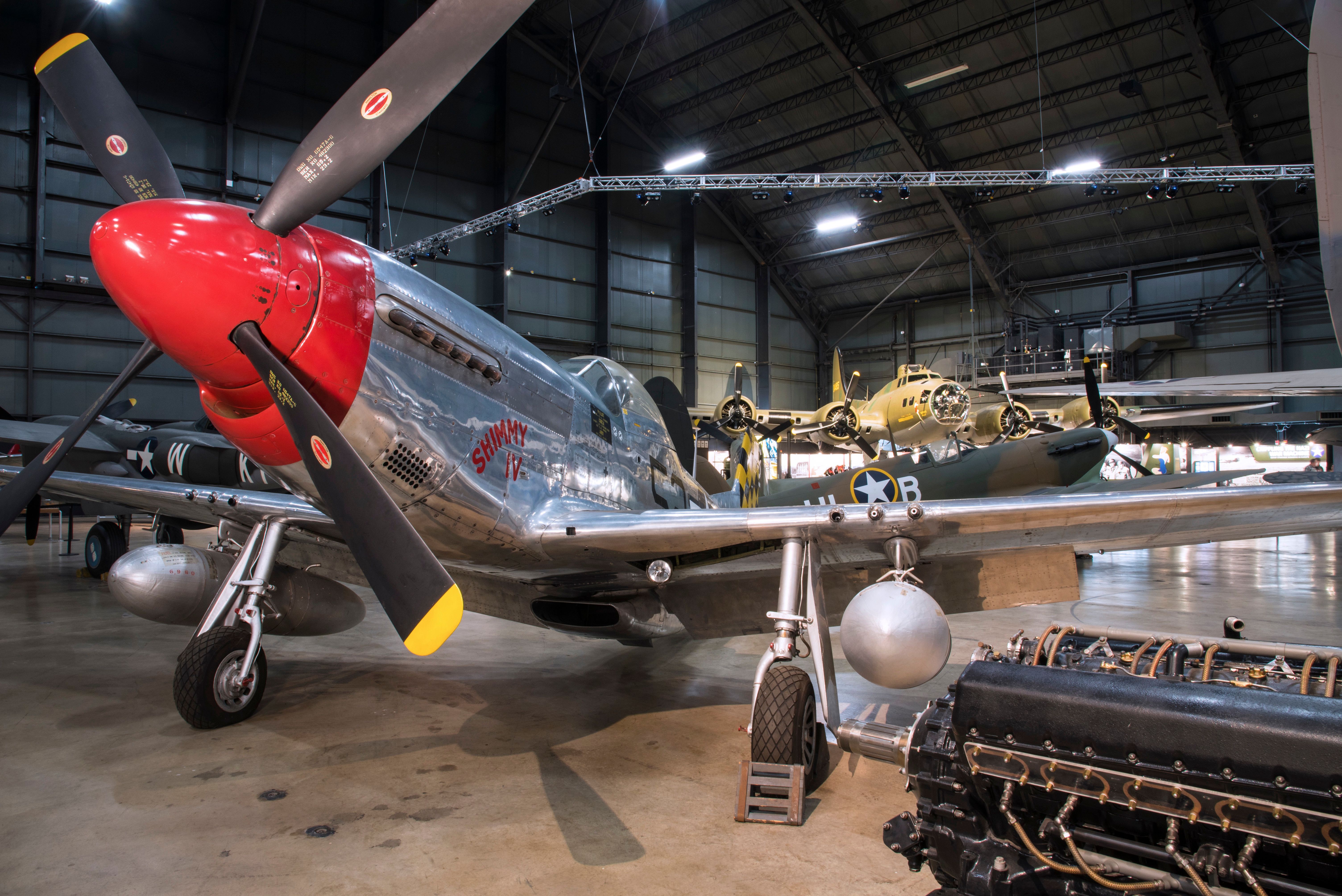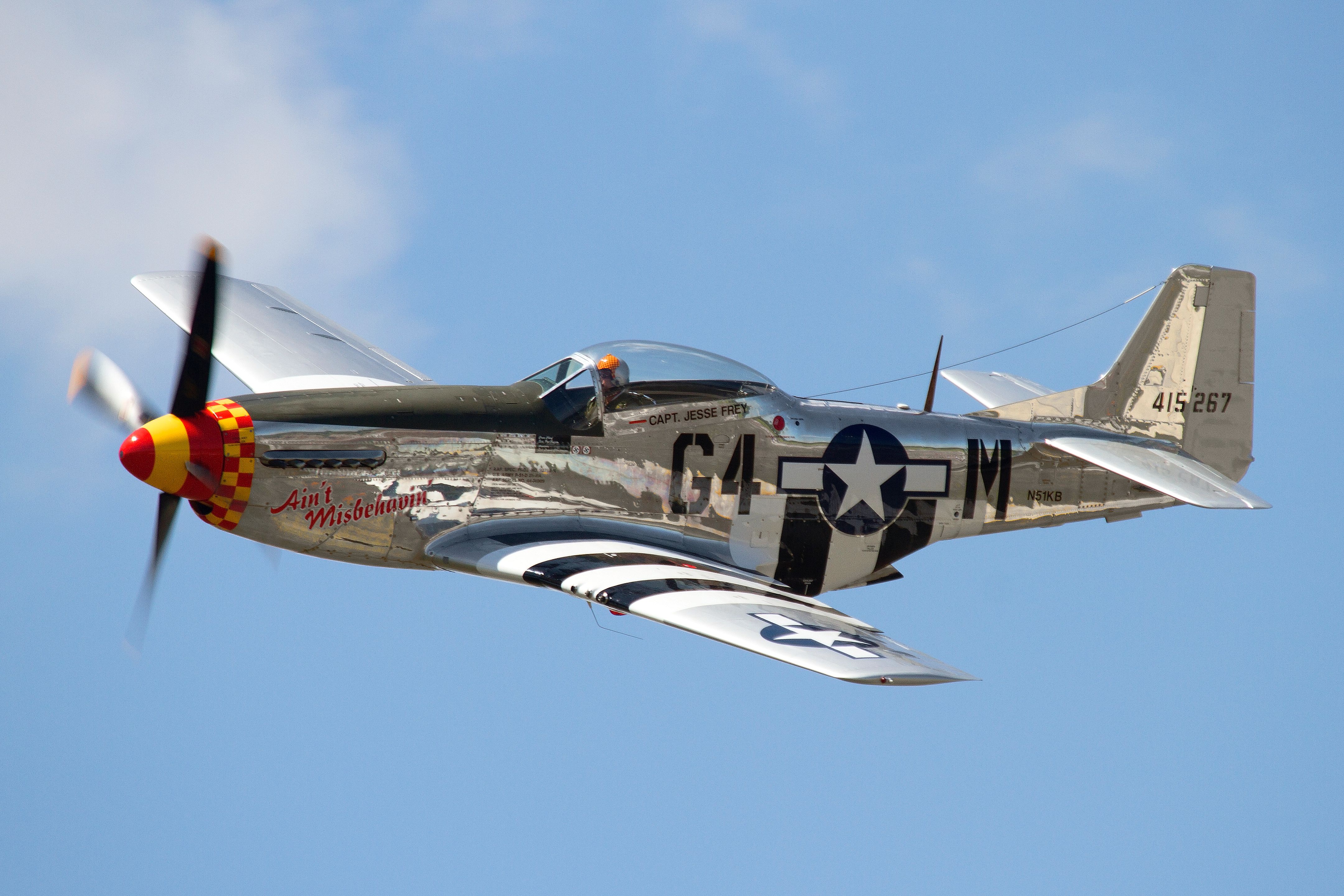Summary
- The North American P-51 Mustang, an iconic WW2 aircraft, was one of the most reliable fighters of the era, producing nearly 5,000 enemy aircraft kills.
- The P-51 Mustang, initially produced in response to the need for a new fighter, was used and served for 44 years after its debut.
- The P-51 Mustang was precisely what the Allies needed during WW2, with a long-range that supported multiple kinds of missions.
The North American P-51 Mustang
, a long-range single-engine multipurpose fighter, is arguably the most iconic aircraft of the entire Second World War, and maybe even of the Korean War as well. With more than 15,000 P-51s rolling off of the manufacturer’s assembly lines, the aircraft stands out as one of the most-produced fighter aircraft of all time, although the German Messerschmitt Bf 109 was the most produced pure fighter of the war.
First taken to the skies on October 26th, 1940, the P-51 Mustang would begin an impressively long service history, as the plane would soon be fielded in January 1942 by the Royal Air Force, according to Boeing. The plane would prove versatile and reliable during its years of service and was not even retired until 1984 when the Dominican Air Force finally removed the plane from service.
Photo: National Museum of the United States Air Force
There are many reasonable arguments to be made that the P-51 is the most successful aircraft of the entire war, with nearly 5,000 enemy aircraft destroyed by Mustang pilots. Let’s take a deeper look at the story of P-51, and what made the plane so successful.
A need for a new fighter led to the P-51’s development
During the depths of the Second World War, the United States Army Air Forces, alongside its allies in the Royal Air Force, the Royal Canadian Air Force, and many others, were struggling to keep pace with advanced supermaneuverable fighters introduced by the German Luftwaffe. The Second World War required innovative fighter technology to serve multiple mission purposes, as fighters were not just engaged in dogfights but also assisted in long-range fighter escorting and fighter bombing.
What the Air Force needed was a fast yet nimble fighter, with extended-range abilities to accompany fighters on even the longest of missions into Nazi Germany. Furthermore, the aircraft needed to be heavily armed, to handle the enemy fire it would encounter. Lastly, such a fighter would need to be endlessly customizable, able to be constantly adjusted and changed to meet the demands of whatever mission is at hand. Well, luckily enough, such an aircraft would quickly come along in due time.
According to the Imperial War Museum, the story of the P-51 Mustang began when the British Purchasing Commission, an organization that determined the importation of armaments during the war, approached US manufacturer North American Aviation, asking them to build a set of Curtiss P-40 fighters for the Royal Air Force.
Instead of choosing to provide the modified Curtiss aircraft, James H Kindelberger, the company’s leader at the time, chose to offer an entirely novel design. Little did Kindelberger know that his new design would be exactly the fighter that the Allies were looking for and one that would go down in history as among the most iconic aircraft of the entire Second World War.
A dynamic aircraft
Over the years, North American produced dozens of different aircraft, such as the T-6 Texan, a trainer of which many thousands were made for the US, UK, Canadian, and other militaries
. Though in 1940, one of the most iconic World War II fighters would embark on its maiden flight, the P-51 Mustang. Similarly, many thousands rolled out of production
.
North American Aviation’s P-51 fighter, armed with .50 caliber Browning machine guns, was 32 feet (9.75 meters) long and featured a 37-foot (11.28 meters) wingspan. And the wings were very significant. According to Hush Kit, the P-51 Mustang was one of the first aircraft to feature a wing design using the “laminar flow” principle, which helped reduce drag by a great percentage.
Photo: BlueBarronPhoto | Shutterstock
Initially paired with the Allison V-1710, a liquid-cooled V-12 piston engine, the P-51 Mustang would eventually be fitted with a Rolls-Royce
Merlin; also a V-12 but with higher horsepower that facilitated top speeds of 440 mph (708 km/h). With very low drag and a powerful engine, one of the fighters’ premier highlights was its range of around, allowing it to be used as a bomber escort that could comfortably fly from England to Germany and back, according to the Smithsonian. Here are some specifications for the P-51D Mustang:
|
Category: |
P-51D Mustang Specification: |
|---|---|
|
Maximum speed: |
440 miles per hour |
|
Service ceiling: |
41,900 feet |
|
Range: |
1,434 nautical miles |
|
Maximum takeoff weight (MTOW): |
12,100 lbs |
Precisely what the Allies needed
Before the Mustang, slower-moving but long-range bombers could be quickly shot down by fighter jets from the Axis forces. Popular Allied fighters at the time, while quick, did not have the range to stick by bombers on their way to battle. Aided by underwing drop tanks, the North American P-51 had a range of nearly 1,400 miles (2,253 km), and protection was no longer a problem.
Allied bombers and P-51 Mustangs would depart together in formation, flying into enemy territory. As soon as Axis forces began hammering on the bombers, the fighters were free to break formation and wreak havoc, shooting as many Nazi aircraft as possible. And since the P-51 was just as acrobatically agile as it was powerful, it fit the bill perfectly. With bombers free to move about and ground troops unafraid of terror from the skies, Allied forces advanced thanks in part to support from North American Aviation’s prized fighter.
Photo: Ryan Fletcher | Shutterstock
In addition to its primary use as an escort, the Mustang itself could carry a limited barrage of bombs and, as a result, was used as a fighter bomber. The aircraft also saw use as a reconnaissance plane, gathering photographic intelligence of the battlefield.
As explained by the Smithsonian, the P-51 was not just a successful aircraft from the World War II era, of which there were many. It was the “quintessential symbol of American fighter aircraft,” undoubtedly a critical factor in air superiority during the war. Around 14,000 were built during the war, some of which have survived and are airworthy or on display in locations all across the globe.




